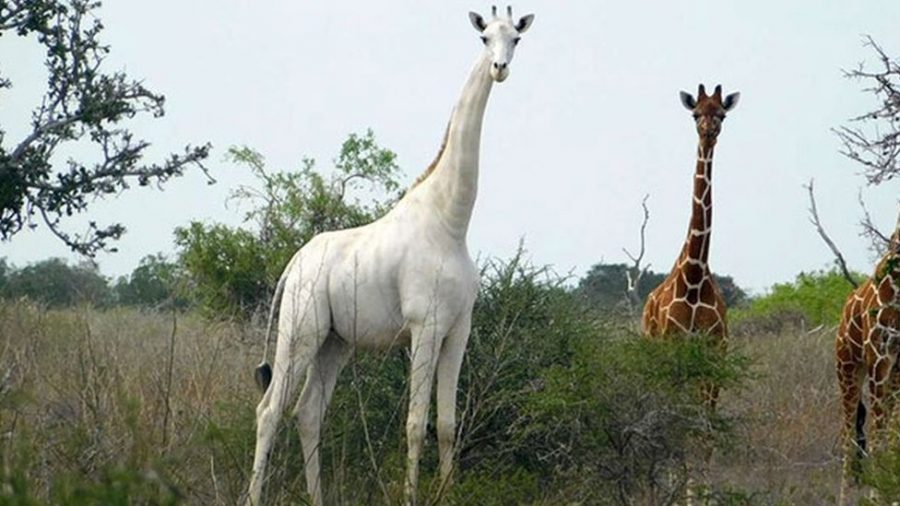Rare Albino Giraffe Discovered
First Known Albino Giraffe is Fitted for GPS
December 14, 2020
In an effort to protect the animal from poachers in Kenya the world’s only known albino giraffe will be tracked by wildlife experts at the Ishaqbini Hirola Community Conservancy.
The unusual male Giraffe had been traveling with a female and a calf until she and her calf were unfortunately killed by poachers in Kenya’s Garissa County.
The way the GPS device works is it’s attached to one of his horns and will give updates on his location every hour.
NRT senior wildlife monitoring officer, Antony Wandera, told CNN
“Our mission is to work with communities, enable them [to] be resilient, secure their livelihoods as well as protect the unique wildlife like the only known white giraffe.”
The male giraffe has a rare genetic trait which results in the partial loss of pigmentation in an animal called leucism. This makes it easy for the poachers to spot. The difference between albinism and leucism is that animals with leucism continue to produce a dark pigment in their soft tissue, meaning the giraffe’s eyes remain dark.
In March, the male giraffes family were killed by poachers and left in a skeletal state.
The African Wildlife Foundation estimates that giraffes have lost 40% of their population in just 30 years. This isn’t only poaching though of course.
The African Wildlife Foundation states on their website “In the late 19th and 20th centuries herds of 20 to 30 animals were recorded, now on average herd sizes contain fewer than six individuals.” This statistic states that the density of herds are five times less than what they were in previous centuries.
Overall the biggest challenges the giraffe population faces is civil unrest, illegal hunting, habitat loss, and ecological changes.
Regardless as human populations grow and increase agricultural activities, expand, and construct, the giraffe is losing its main food source, acacia trees.



